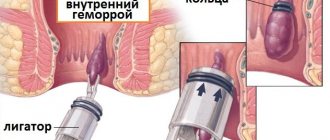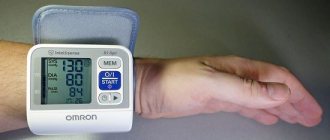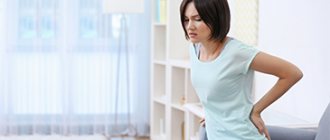Introduction
The indicator of intra-abdominal pressure (IAP) is an important factor in assessing the severity of the condition of patients with various urgent surgical diseases, including acute pancreatitis (AP); much attention is paid to its measurement and correction [3, 4, 12, 22, 31, 35]. In an adult, an IAP of 5-7 mmHg is considered normal. Higher IAP values are considered intra-abdominal hypertension (IAH). There are [25] 4 degrees of increase in VBG (Table 1)
.
The following factors contribute to an increase in IAP in patients with AP: intestinal paresis, compression of the duodenum, gastrostasis, the presence of free fluid in the abdominal cavity and retroperitoneal space, rigidity of the anterior abdominal wall due to its edema and inadequate analgesia. Increased IAP leads to a number of serious dysfunctions of various organs. Compression of the inferior vena cava with a subsequent decrease in venous blood flow to the heart, a decrease in cardiac output with a simultaneous increase in peripheral vascular resistance cause impaired microcirculation and tissue perfusion [7-9, 14, 20, 24].
Abdominal perfusion pressure (APP) is determined by the difference between mean arterial pressure (MAP) and IAP. It is believed that for the normal functioning of the abdominal organs and retroperitoneal space, the BPP should be above 60 mm Hg. [10, 11, 26].
IAH leads to a high position of the diaphragm dome, a decrease in pulmonary volume and alveolar ventilation. This causes compression of the lymphatic vessels and accumulation of interstitial fluid in the lungs. An increase in inspiratory pressure causes the development of interstitial pulmonary edema, the appearance of atelectasis and, as a consequence, hypoxia and hypercapnia [18, 29], and pulmonary failure. Artificial ventilation in such conditions can lead to barotrauma and the development of respiratory distress syndrome.
The effect of IAH on the urinary system is associated with compression of the renal veins and renal parenchyma, a decrease in blood flow in the kidney, glomerular filtration pressure (determined by the difference between mean blood pressure and IAP) and filtration gradient (FG, determined by the difference between mean blood pressure and double IAP). With a progressive increase in IAP, anuria occurs.
An increase in IAP in the presence of organ failure determines the presence of abdominal compartment syndrome (ACS). The World Society of the Abdominal Compartment Syndrome (2012) gives the following definition of ACS - a persistent increase in IAP of more than 27 cm of water. Art., which is associated with new organ dysfunction/failure. In other words, ACS is a combination of increased IAP >20 mm Hg. (27 cm water column) and the presence of failure of at least one organ.
It has been shown that IAH in patients with severe AP forms from the first days of the disease, with a favorable prognosis it persists for 3-5 days, and then decreases. In all deceased patients with severe AP, pressure in the abdominal cavity remains high throughout the first week. An increase in IAP can also be observed with the progression of local complications: acute fluid accumulations, widespread parapancreatitis [15]. An increase in IAP is one of the mechanisms for the development of organ failure, which leads to death [37]. There is a certain sequence of involvement of functional systems: acute respiratory failure (ARF), acute cardiovascular failure (ACHF), hepatic-renal failure, enteral failure, encephalopathy [5].
The success of treatment of patients with severe AP largely depends on early diagnosis and relief of IAH, which is facilitated by monitoring this indicator from the first hours of the disease [17, 30, 36]. Early monitoring and treatment of IAH allowed to reduce mortality in severe AP from 20 to 10% [34].
To do this, the authors [27, 28, 32, 34] carry out adequate anesthesia to reduce tension in the anterior abdominal wall, drainage of all fluid accumulations in the retroperitoneal tissue and abdominal cavity, decompression of the gastrointestinal tract, limit water load (no more than 5 liters per day ), colloidal and hypertonic solutions are administered, hemodialysis and ultrafiltration are used in a timely manner. Vasoactive drugs are used to maintain perfusion pressure. In case of refractory IAH with the development of ACS, surgical methods are resorted to: subcutaneous fasciotomy, laparostomy using mesh allografts, sandwich bags and vacuum-assisted wound closure [13, 17, 22, 23, 36].
Many studies have shown that several hours after decompressive laparotomy, patients with ACS experience improvement in organ function [6, 16, 33]. This indicates the direct role of IAH in the development of organ dysfunction. A retrospective analysis of treatment results showed that in a group of 23 patients with AP complicated by ACS who underwent decompressive laparotomy ( n
=18), survival rate was 83%, while without it it was only 20% [36].
Our goal was to study the role of parapancreatitis in the progression of IAH in patients with severe AP with various manifestations of organ failure.
What it is?
The body is a mechanism in which complex processes occur every day. The patient does not notice this and continues with his daily routine. These processes are responsible for the proper functioning of organs and internal systems and maintaining health. One of the important processes for the body is pressure.
When the internal balance is disturbed, a person begins to experience unpleasant feelings. Therefore, to maintain health, it is never suitable to pay due attention to all types of internal pressure. First of all, this relates to intracortical pressure. The increase in pressure inside the abdominal cavity is called intrazonal hypertension (IAH). The disease develops as a result of abnormal functioning of the lungs, hearts, kidneys and intestines.
If a person is healthy, indebile pressure varies from 0 to 5 mm Hg. - This is the norm. In an adult patient in critical condition, this figure can rise to 7 mmHg. The increase is observed in several other concerns about the body's concerns - obesity and childbirth. In this case, the pressure indicator does not go beyond 10-15 mmHg.
The patient’s body has time to adapt to new conditions, and this does not affect his health. As a result of surgery, that is, the abdominal cavity, the device will display 13 mmHg. Such values do not threaten the patient's life in such conditions. It is impossible to talk about a forcible increase in pressure without any important reasons.
Material and methods
The results of treatment of 63 patients with severe AP who were admitted to the clinic within 1-4 days (on average 26.4±3 hours) from the onset of the disease were analyzed. All patients were in the intensive care unit. There were 48 men (76%) and 15 women (24%). The age of the patients ranged from 19 years to 81 years (44.4±2 years). The cause of AP in 87% of patients was alcohol intake, in 13% it was cholelithiasis. On admission, 60 patients were diagnosed with enzymatic peritonitis, for which 55 (87.3%) patients underwent sanitary laparoscopy, 5 patients underwent laparotomy (3 due to concomitant destructive cholecystitis, 2 due to the impossibility of excluding another acute surgical disease) .
All patients were divided into 4 groups: 24 patients (group 1) had no signs of organ failure, 15 (group 2) had ARF, 11 (group 3) had ARF and AHF, 13 patients (4th group) a combination of ARF, AHF and acute renal failure (ARF) was revealed.
IAP was measured according to the method of I. Kron et al. [21], readings (in cm H2O) were taken on the 1st, 3rd, 5th, and 7th day from the onset of the disease. The levels of BPD and FG were calculated (readings in mmHg). The indicators were compared in patients of different groups with each other and with the data of the APACHE II integral rating scale, reflecting the severity of the patients’ condition.
CT with bolus contrast was performed in 21 patients. Retroperitoneal tissue damage was assessed according to the classification of K. Ishikawa et al. [19]. The classification is based on CT signs of the prevalence of infiltrative fluid changes. The authors distinguish 5 degrees of damage: 1st degree - changes in the anterior pararenal space or in the root of the mesentery of the transverse colon; 2nd degree - changes in tissue in the area of the lateral canal or along the posterior layer of the pararenal fascia, 3rd degree - changes in retrocolic tissue, delimited by Toldi's fascia, 4th degree - spread of the inflammatory process to the preperitoneal tissue and (or) to its own perirenal tissue fiber, 5th degree - transition to the retroperitoneal fiber itself (textus cellulosus retroperitonealis). In grades 4 and 5, damage to the paravesical and presacral tissue is possible. In the presence of 1-2 degrees of damage, parapancreatitis was considered local, in cases of 3-5 degrees - widespread.
In the other 42 patients, widespread pancreatitis was assessed based on ultrasound, video laparoscopy, as well as information obtained during surgery and autopsy data.
To carry out multiple comparisons with the control group, the Dunette method was used, to compare two groups with each other - the Student test, to compare qualitative characteristics - the &khgr;2 criterion and Fisher's exact test, and to study the correlation, the Pearson test was used.
Measurement methods
To measure intrabacal pressure, one of two existing methods is used:
- catheter;
- Surgical method.
In the first case, a catheter is used, which is introduced into the patient through the bladder. It is considered less informative than the surgical method. This applies when the second is not possible. In this case there should be no complications.
Measuring internal pressure using a surgical method is possible during surgery. The doctor places a special sensor in the abdominal gown, which after a while shows the pressure level. The measuring device can also be placed on the liquid colon. This has good information value. Decreased or increased values indicate the development of a pathological process in the human body.
If you begin to notice characteristic symptoms, you should ask your doctor.
Results and discussion
Indicators of IAP, APACNE II, BPD and FG
The values of IAP in patients of the studied groups are presented in Fig. 1
.
Figure 1. Indicators of IAP in patients with AP.
Here and in Fig. 2, 4 and 5: NO - organ failure, other designations in the text. In patients of groups 1-3 on day 1, IAP levels did not differ significantly and corresponded to grade 1 IAP, whereas in patients of group 4, IAP was significantly higher and corresponded to grade 2 IAP. In patients of the 1st group, normalization of IAP occurred already by the 3rd day, in patients of the 2nd group - after the 3rd day (by the 7th day, IAP was normal). In patients of the 3rd group, the level of IAP significantly increased by days 3-5 (2nd degree of IAP); in the absence of significant differences with the 1st and 2nd groups, there was a clear tendency to increase IAP on the 7th day. In patients of group 4, grade 2 IAH persisted on days 3 and 5; on day 7, there was a significant increase in the indicator to grade 3. In Fig. 2
The indicators of the APACHE II scale in patients of different groups are presented.
Figure 2. Indicators of the APACHE II scale in patients with AP. Already on the 1st day, in patients of groups 2-4 with manifestations of organ failure, in contrast to patients of group 1, values corresponding to the severe course of the disease were noted. The highest levels were in the 4th group. Over time, patients in groups 1 and 2 showed a decrease in the APACHE II index, while in groups 3 and 4 (despite the treatment) it increased by the 5th and 7th days. Significant differences in indicators were noted during all periods of observation between the data obtained in groups 1, 3, and 4. There was a significant ( p
<0.01) average direct correlation (
r
=0.57) between the indicators of IAP and the APACHE II scale
(Fig. 3)
.
Figure 3. Correlation between IAP and APACHE II scores in patients with AP.
Thus, IAH reflects the severity of the patients’ condition to the same extent as the APACHE II scale index. In Fig. 4 and 5
the dynamics of BPD and FG in patients of different groups is presented (in patients of groups 3 and 4, vasoactive drugs were used to maintain adequate hemodynamics).
Figure 4. BPD indicators in patients with AP.
Figure 5. FG indicators in patients with AP. There was a significant decrease in FG and a trend towards a decrease in BPD in patients of group 4, which confirms the thesis about the influence of reduced BPD and FG on the development of renal failure.
Clinical picture
Indicators are observed frequently. At the same time, irrelevant changes are not disclosed in any way. This is not a sign of a serious illness.
Significant changes in the previous pressure value look like this:
- feeling of gravity in the stomach area;
- weakness and dizziness;
- High blood pressure;
- Nausea, often leading to vomiting;
- Rattling and shaking in the stomach;
- incomplete defecation files;
- dull or painful pain;
- bloating;
- Bloody abdominal cavity.
If there is a block of Peter's hypertension, it is difficult to determine. Nonspecific symptoms are not enough. To make an accurate diagnosis, the patient must be subjected to a complete examination. Based on the data obtained, the doctor makes a diagnosis and prescribes treatment.
The patient may have specific symptoms, in addition to general symptoms. The strength of their manifestation and nature depends on the reason for which the disease developed. Regardless, it is contraindicated to have the patient perform self-healing. This can not only lead to complications, but also cause death if emergency medical care is not provided.
Treatment
It is difficult to make a valid diagnosis based on the symptoms listed. Other diseases may also have the same set of warning symptoms. To make an accurate diagnosis, you need to see a doctor who will conduct all the necessary diagnostic examinations and tests. First of all, two factors are considered that determine the cause and severity of the disease.
To confirm the diagnosis, the patient is given an umbrella, which is inserted rectally. During the procedure, the patient does not feel pain, only slight discomfort is possible. This method is used to measure performance. It cannot be used to reduce intra-abdominal pressure.
If the patient does not ignore the symptoms and begins treatment as soon as possible, this will stop the first stage of the disease. In this case, the patient will avoid complications in the form of multiple organ failure. The duration of therapy depends on the stage of the disease. In this case, treatment is carried out using several methods:
- Conservative treatment - medications and physiotherapeutic procedures.
- Radical - surgical intervention.
If the patient complains of being unwell and has serious complaints, an immediate diagnosis is carried out. In this case, IAP is measured. If it exceeds 25 mmHg. St., urgent surgery is required. Abdominal surgery is used.
Drug therapy and physiotherapeutic methods
It contains the following drugs:
- sedatives;
- painkillers;
- muscle relaxants.
Vitamins and mineral complexes are prescribed to maintain the function of the digestive tract.
Physiotherapeutic procedures are carried out after the main treatment. They help stabilize water and electrolyte balance in the body. This may be the installation of a drainage tube or an enema with medicinal decoctions. Diuresis stimulation is often used.
Factors that increase intra-abdominal pressure should be avoided. The patient should not wear tight-fitting clothing; it is better to choose a loose fit. To protect your health, avoid over-tightening your trouser belt. The lying position should be at least 20 degrees.
Avoid exercises that require you to lift heavy weights (more than 10 kg). The abdominal muscles should also be protected from excessive tension. The patient is advised to avoid exercise. A varied diet will help keep the body in a stable state.








